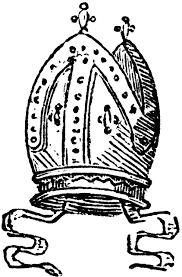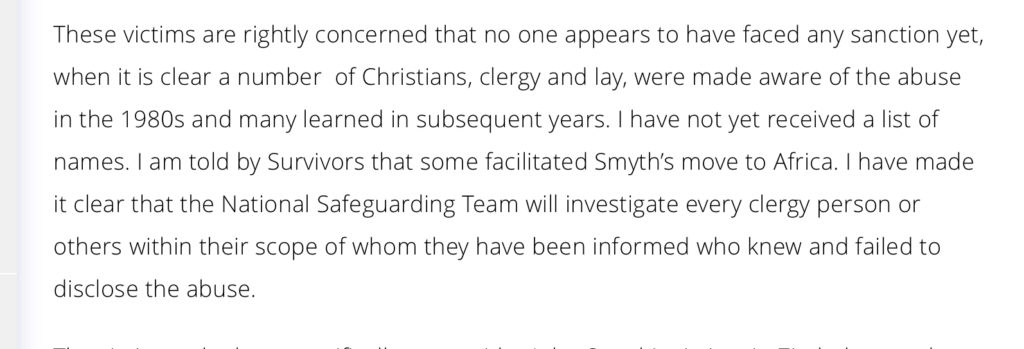
I have to go back almost 50 years to remember the experience of attending a professional football match. The setting was Selhurst Park, and the team that I was nominally supporting was Crystal Palace. At the time, I followed the fortunes of this team in a half-hearted way since it was my local team. Several members of my youth club were always talking about it. I have no memory of who won the match I attended, or even who the opposing team was. The memory I have is of the extraordinary roar of the crowd as it followed the action. This might be thought to give fans an experience of something like a ‘one hundred and forty-four thousand’ event as in Revelation 7.
My brief exposure to the world of football was sufficient to allow me some small understanding of the intense tribal loyalties that coalesce around all the different clubs in this country. The important thing for me to understand then was that there was truly nothing more important in the world than for the favoured side to win. It was Bill Shankly who said “Some people believe football is a matter of life and death, I am very disappointed with that attitude. I can assure you it is much, much more important than that.” I wonder how many other groups in society command that kind of devotion and loyalty. If we were to suggest that a Christian feels even a small amount of this devotion, then the Church would be a considerably livelier institution. The non-members of the Church might see the devotion of the members, if there were even a little of the dedication shown by an ardent football fan. Such ‘evangelism’ would not necessarily be attractive to the outsider but at least they would know that the fans of the Church were serious in their commitment. However, sadly, evangelism does not seem to work like this. Few Christians seem able to feel, let alone communicate, the radiant exuberance of the devoted football fan.
The identification of the football fan with his/her team is rewarded by the occasional intense moment of experiencing the triumph of victory. Equally, there are the other times of disappointment and pain. As a student I once worked as a barman for a single day at Twickenham when a big rugby match was under way. It became apparent to me, as I collected up countless beer glasses, that intense joy or sorrow could both be marked by the consumption of copious amounts of alcohol.
Being a football fan allows the individual to experience the highs and lows of an identification with a large institution. All human beings need to belong, and the identification with a team gives the individual fan a strong sense of being part of a ‘we’. There are two aspects of this belonging. First, the fan feels part of the playing team, the managers, the players and the coaches. All fans will have strong opinions as to why things are going wrong, if they do. The language used to criticise managers seems to be colourful and explicit. Alongside this sense of bonding with the team etc., there is also the experience of mutuality and solidarity with fellow fans. They are met on the terraces and on the trains going to and from away matches. Although racism and homophobic attitudes have sadly crept into the world of football, most fans would prefer their team and its supporters to be more moral and upright than others. Fans are quick to condemn such things as fixed matches and bribery allegations. Bad behaviour by players, on or off the pitch, is taken personally and the shame of such episodes is felt keenly by fans as though committed by the fan individually. Conversely when a player is revealed as upright and moral, the fans feel the pride of achievement as though it is their own. Marcus Rashford, whose actions on behalf of poor families earned him an MBE, was applauded by Manchester United fans because ‘their’ player was seen to achieve in a new sphere of excellence.
Passionate identification with an institution is something that Christians should be able to recognise readily. For a Christian, the identification is a double reality. We identify with Christ himself and our belief is that we approach God ‘as found in him’. The act of Communion is a moment where we symbolically become part of him. Our identification is also one we make with an institution, the Church. In being Christians, we have chosen to identify with Christ as well as the mixed bag of fellow travellers who call themselves Christian pilgrims.
Identifying with a group of other people over whom we have no influence or control is, however, a risky business. If they are good people and respected by others, then our identification with them is a positive thing for us. If, on the other hand these people are evil and bent only on their selfish needs, then our act of solidarity with them can diminish us and be personally damaging. If there is a risk involved in being identified with the institutional Church, this is especially true especially of a Christian leader. Such leaders benefit if the Church has a good reputation and is thought by ordinary people to be doing a good job. They can more easily enjoy the esteem of their position. If on the other hand the reputation of the Church is poor, the esteem given to leaders can shrink to point of vanishing. Their job will become increasingly hard to do and any gratification afforded to them by having status in society will be under threat.
In a situation where there is periodic negative publicity against the Church, such as we have at present, Christian leaders have a dilemma. One way of dealing with the situation is to defend the institution by maintaining that any wrongdoing is not typical of the whole. This may be true but that is not how the watching public sees it. ‘They are all tarred with same brush’ might be the unfair but typical response after yet another scandal in the Church. The onlooker has grasped a part of the truth. The shame of an abusive action by a leader or a member does implicate many innocent others in some way. The honest approach in the face of any scandal in the Church is for the leaders to acknowledge the fact that the shame of abusive actions spreads outwards. When wrongdoing occurs, there is a need for healing and reparation to take place within the wider institution. Any attempt to deny the awfulness of what has happened, or worse still, attempts to bury the truth, will be seen as examples of appalling hypocrisy. Guilt may not belong to every single member but leaders’ attempts at cover-up or burying the truth with silence and denial, will severely damage the whole Church institution. This damaged reputation will be severely corrosive on the ability of the Church to get alongside people in the future and to be trusted by the general population.
The football fan is passionately identified with his/her football team. The pain of defeat or the shame of bad behaviour by a team member is accepted as part of the course. If a fan were only to celebrate the victories and ignore the negatives and defeats, we would question their status as a proper supporter. If a member or leader in the Church refuses to own any sense of imputed shame when things go wrong and people are harmed in some way, then we seem to be witnessing a betrayal. It might also be described as a failure of nerve and commitment. In practical terms, a passionate identification with team Church has been exchanged for their cowardly silence and neutrality. At this moment we are very much aware, because of the death of ++Tutu, of the true nature of such neutrality. Neutrality too easily leads to a denial of justice and a failure to love and respect others. Silence and neutrality were inappropriate in the South Africa of the 80s when the struggles for justice were at their height. They are also incongruous today, especially in the Church where we look for passionate leadership and action instead of the weak indecisive leadership we so often encounter. The new word invented in the past few days, ‘Tutufication’, is a summary of what we look for from our Church leaders inspired by the example of ++Tutu. In the place of the culture of silence, neutrality and managerialism, we look for integrity, confident truth telling and freedom from fear among our church leaders. We also look for passionate concern and support for the victims and survivors of power abuse. Those who live under the stress of a malicious CDM are also sufferers every bit as much as the victims of apartheid. Neutrality, silence and failures of integrity are all profoundly damaging to the Church. Sadly, there are many who have opted for detached indecisive behaviour. This is far from the passionate identification with an institution that we find among football fans. We might have hoped to find a measure of such passion among the leaders of the Church of Christ.
At the beginning of 2022 we find the Church of England in a state of considerable crisis. It has been implicated in a number of abusive events and at the same time it has been singularly unsuccessful in convincing the victims of these horrors (or the watching world) that it knows what to do to put things right. In summary, the Church leadership does not seem to understand how to deal with the shame that inevitably attaches itself to an institution when things go wrong. Our Scriptures, nevertheless, do fully understand the meaning of sorrow, contrition, sin and failure and how we can proceed from here. We need to see evidence of all these to convince a watching public, that there is still a measure of passionate commitment to truth and justice in the Church and especially among its leaders.








